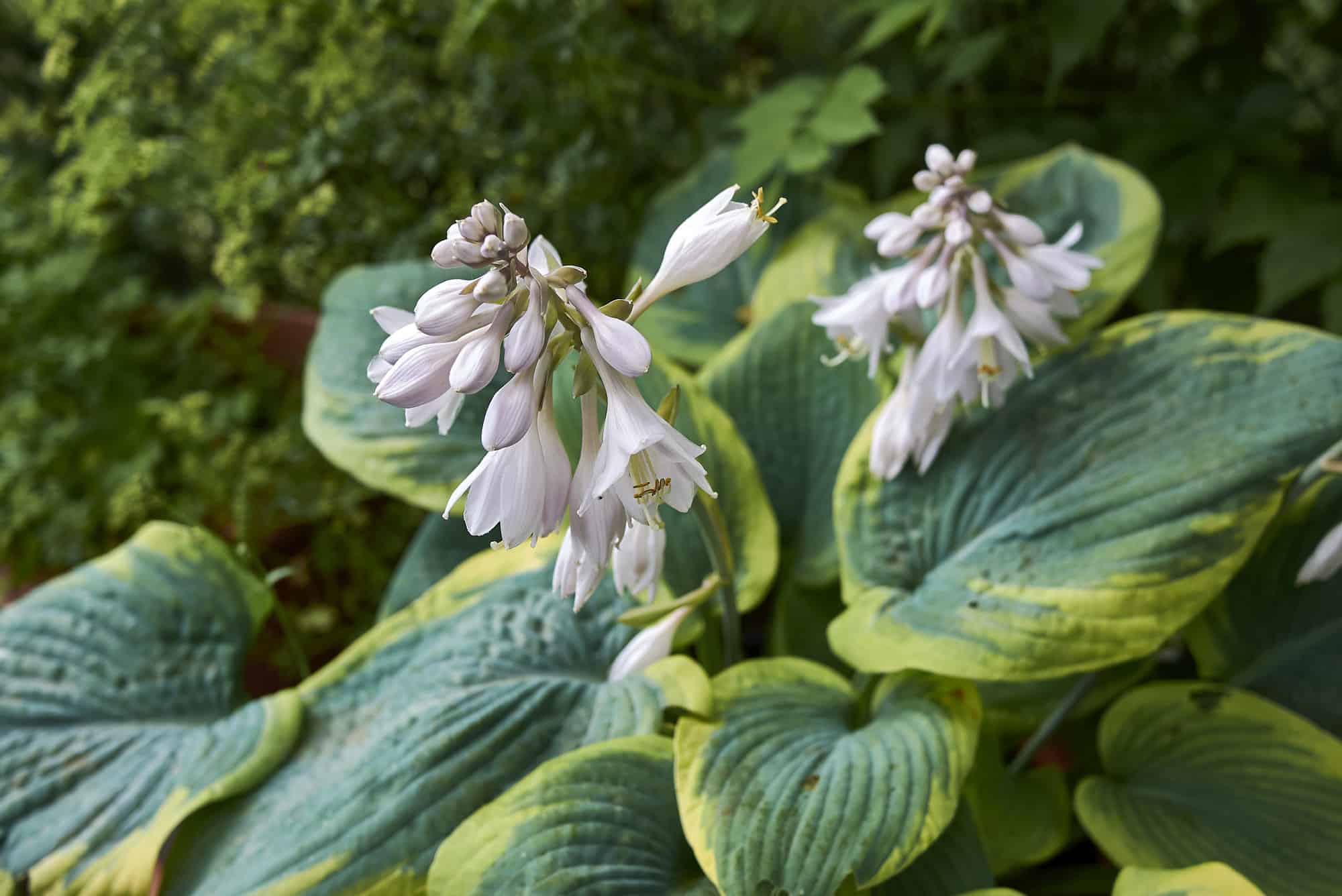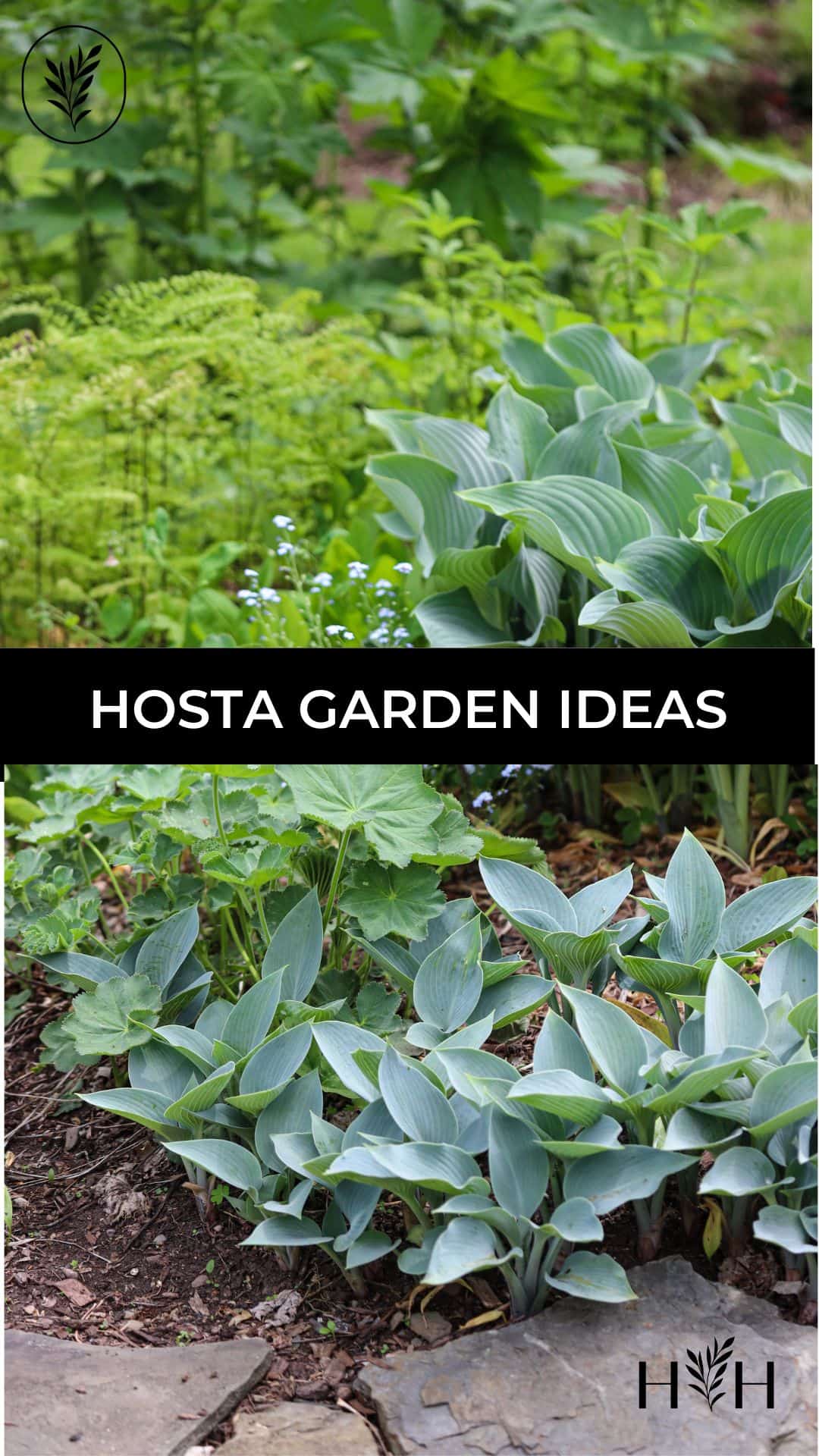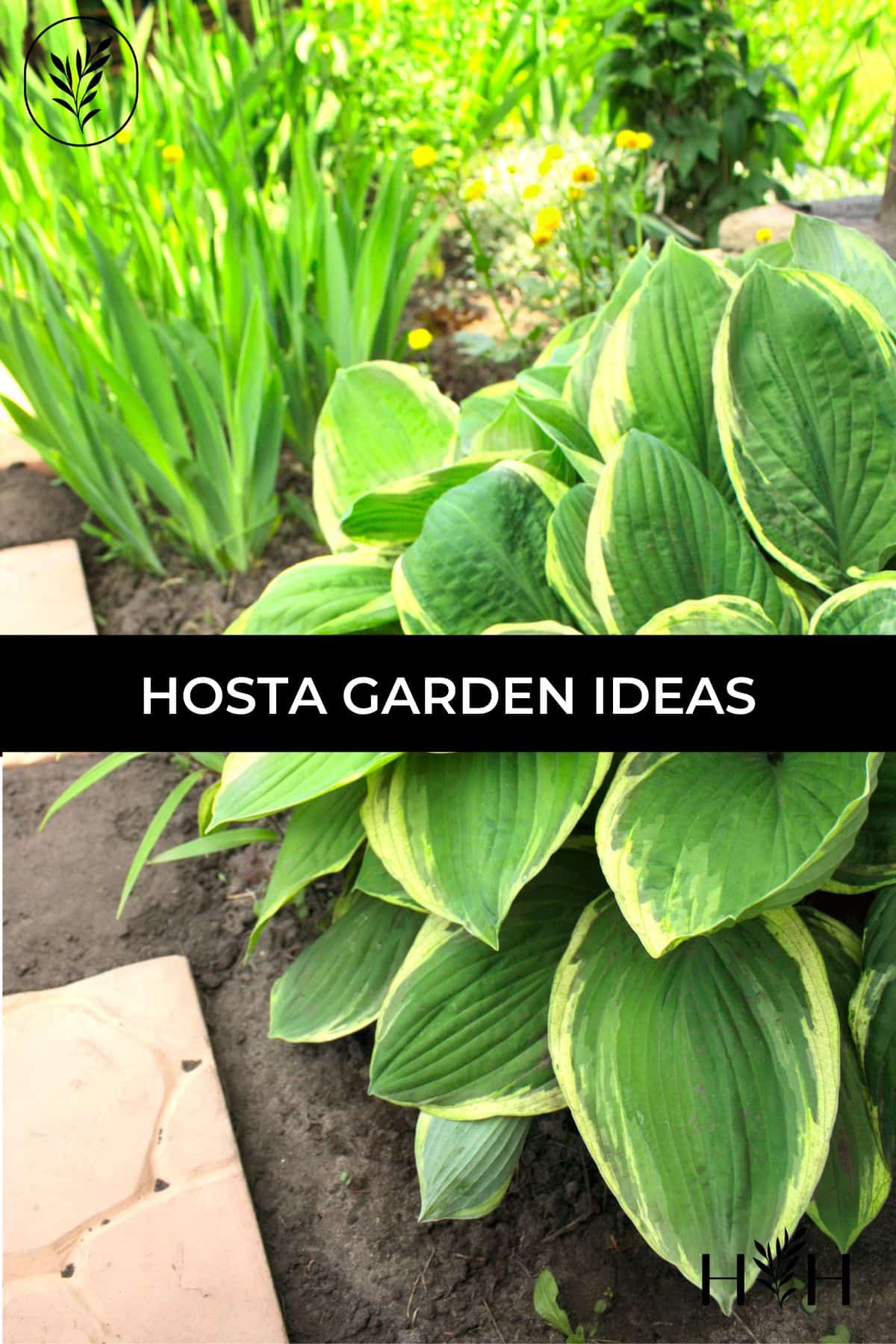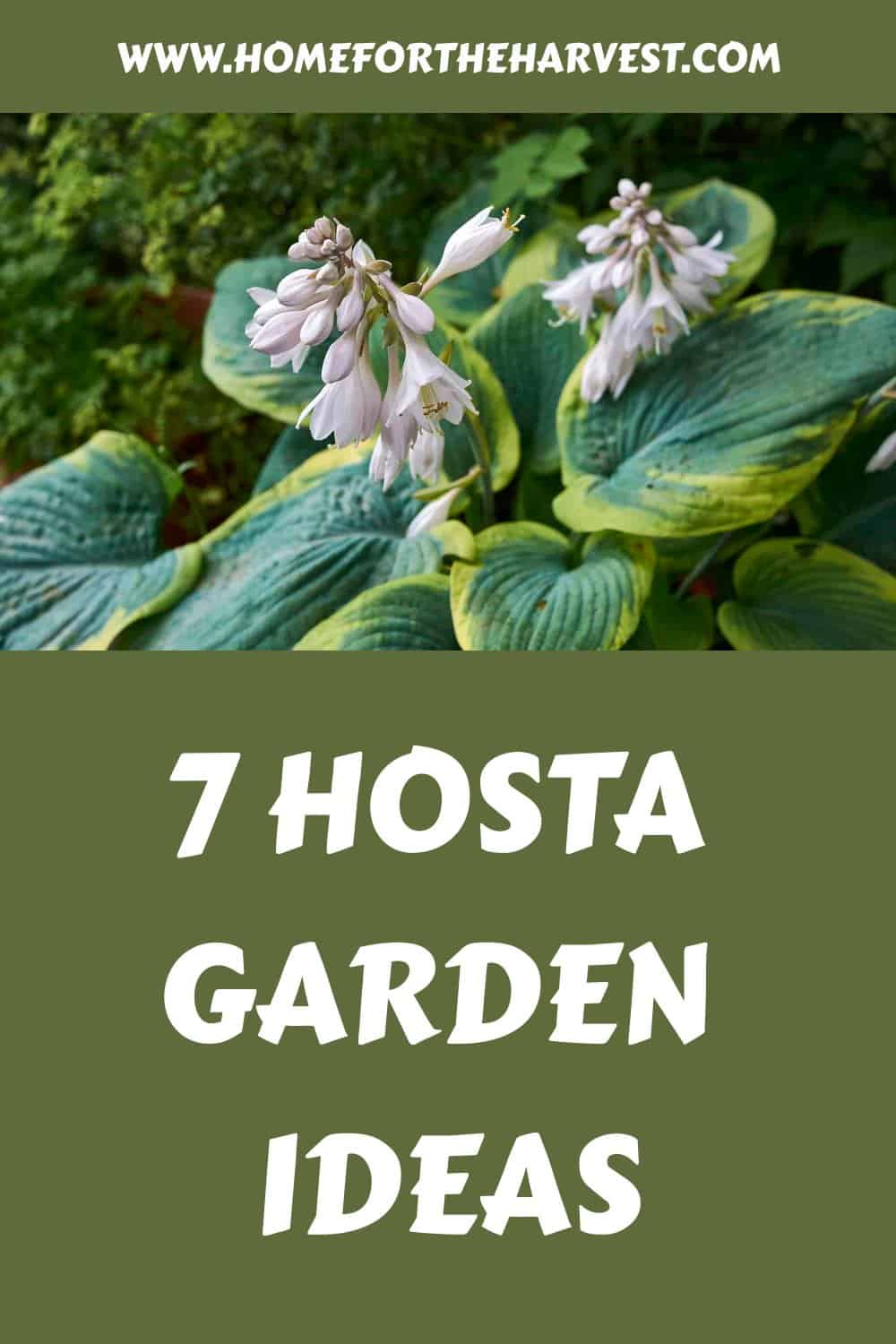Today, I’m diving into the world of hostas, those versatile, shade-loving perennials. Whether you’re a seasoned gardener or just starting out, these seven hosta garden ideas will transform any simple shady spot into a lush, green oasis.
1. Mix up colors, shapes, and textures
Hostas are available in a wide range of colors. Some of these colors are blue, green, gold, white, and red. You can experiment with the colors to make gorgeous groupings and decorate your garden. And fortunately, they’re all easy to grow!
However, different hosta colors are impacted differently by exposure to the sun. Therefore, make sure you group plants with similar sunlight requirements. For instance, some blue-leaved hostas are generally less tolerant of direct sunlight than yellow varieties.
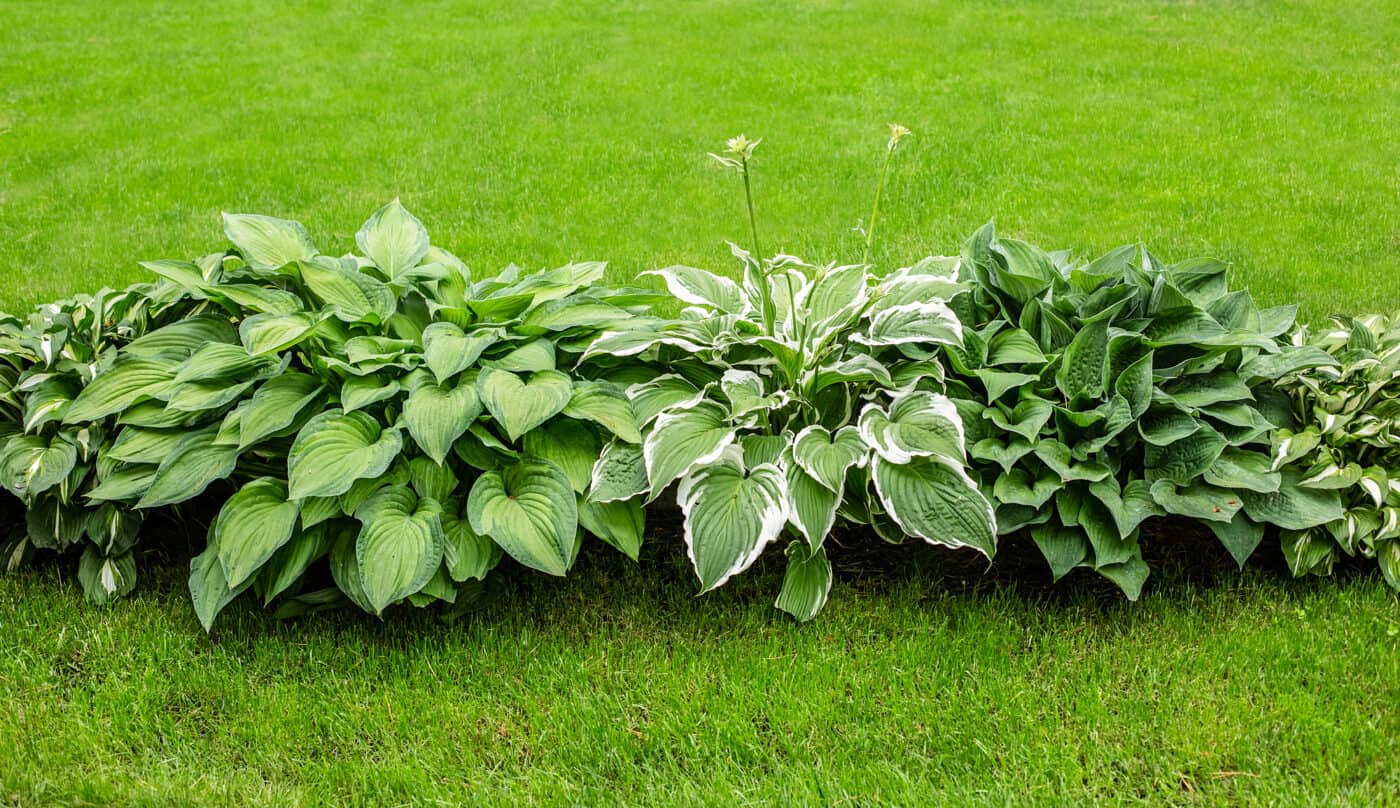
In general, yellow-green hostas are more tolerant of direct sunlight than blue-green varieties. Direct light is preferable in the morning rather than harsh afternoon light. And shade is vital, especially in the afternoon, in hot climates like zones 7-9. Here are some heat-tolerant hosta varieties.
Hosta leaves come in multiple textures. While some are glossy and smooth, others are matte and puckered. Some look like broad tropical banana leaves, while others resemble seersucker fabric. Therefore, combining the different textures can give your garden a distinctive appearance.
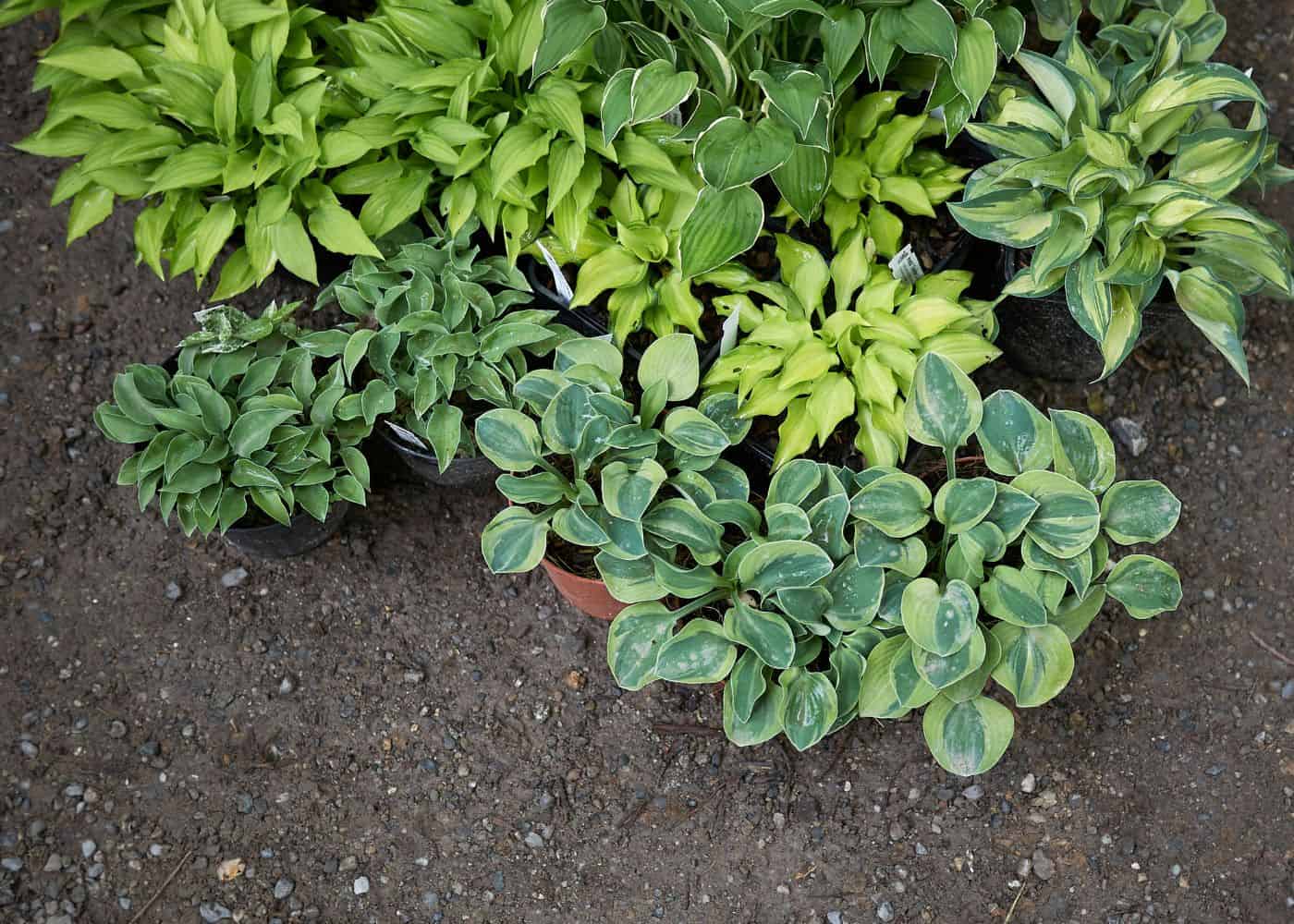
2. Add complimentary companion plants
Companion plants can make a wonderful pairing for hostas. When they’re grouped together, these plants will stand out and receive the recognition they deserve.
You can accent the hosta plants using flowers. For instance, a blue hosta looks wonderful when grown with pink and purple blooms. Tulips, lily of the valley, and anemones are excellent flowers to grow with your hostas.
Other great shade-tolerant perennial plants you could include in your garden are ferns, astilbe, and dicentra. Here is a big list of companion plants for hostas to consider.
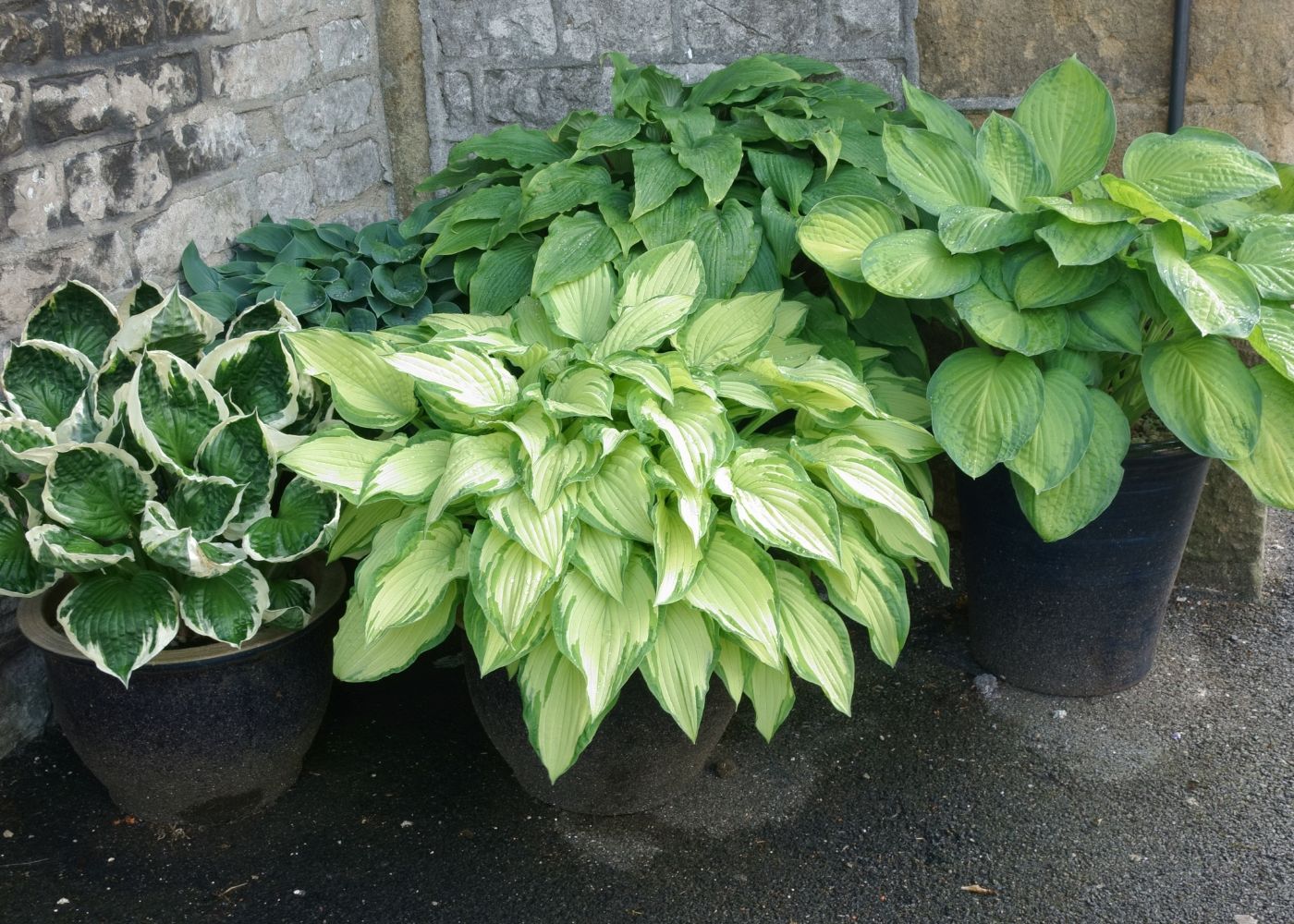
3. Plant a few hostas in containers
Consider growing hostas in a container if you have a patio that receives shade. You can buy Hostas in a pot or place one in a container. Hostas are spread out horizontally. Thus, you should pick a pot with more than three inches between the side of the pot and the roots.
Select small or medium types to prevent them from affecting the neighboring plants. That way, there will be room for the roots to expand as the leaves spread out.
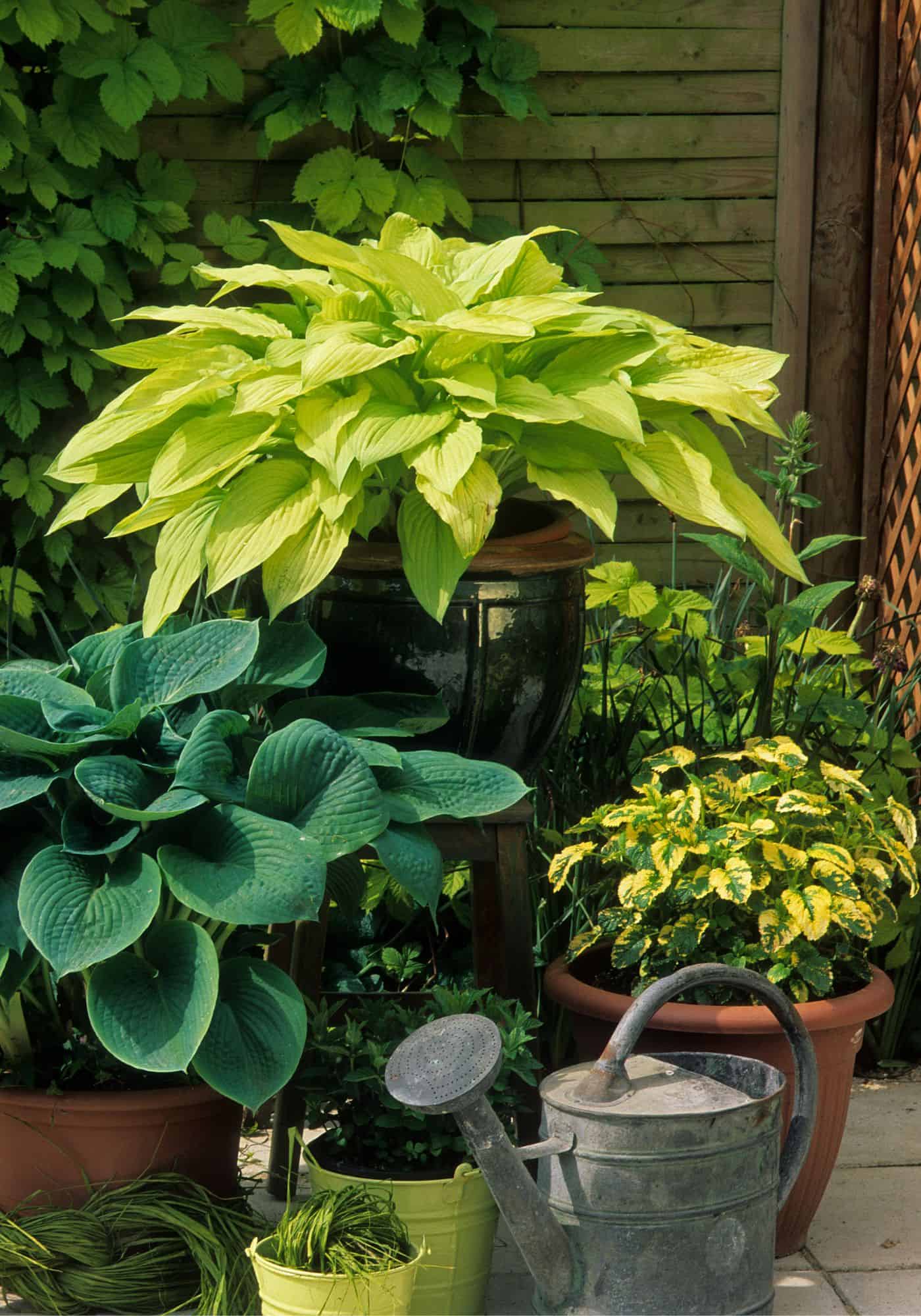
Almost any container will work just fine. However, hostas like their roots to be not so warm. So, don’t choose a black or metal container if your hosta will be in direct sunlight. Terracotta or another unglazed ceramic is usually a better choice for the health of the plant.

4. Place them beside a walkway
If there’s a walkway by your house, placing the Hostas as border plants along the path would be a great choice.
These border plants provide a great contrast with your other plants and can make your walkway look far better. Additionally, they serve as a clearly defined border between different garden elements.
The color variations in your garden already make it bloom with beauty. You can add more to that beauty by framing your walkway with Hostas. This will make your walkway stand out from your garden.
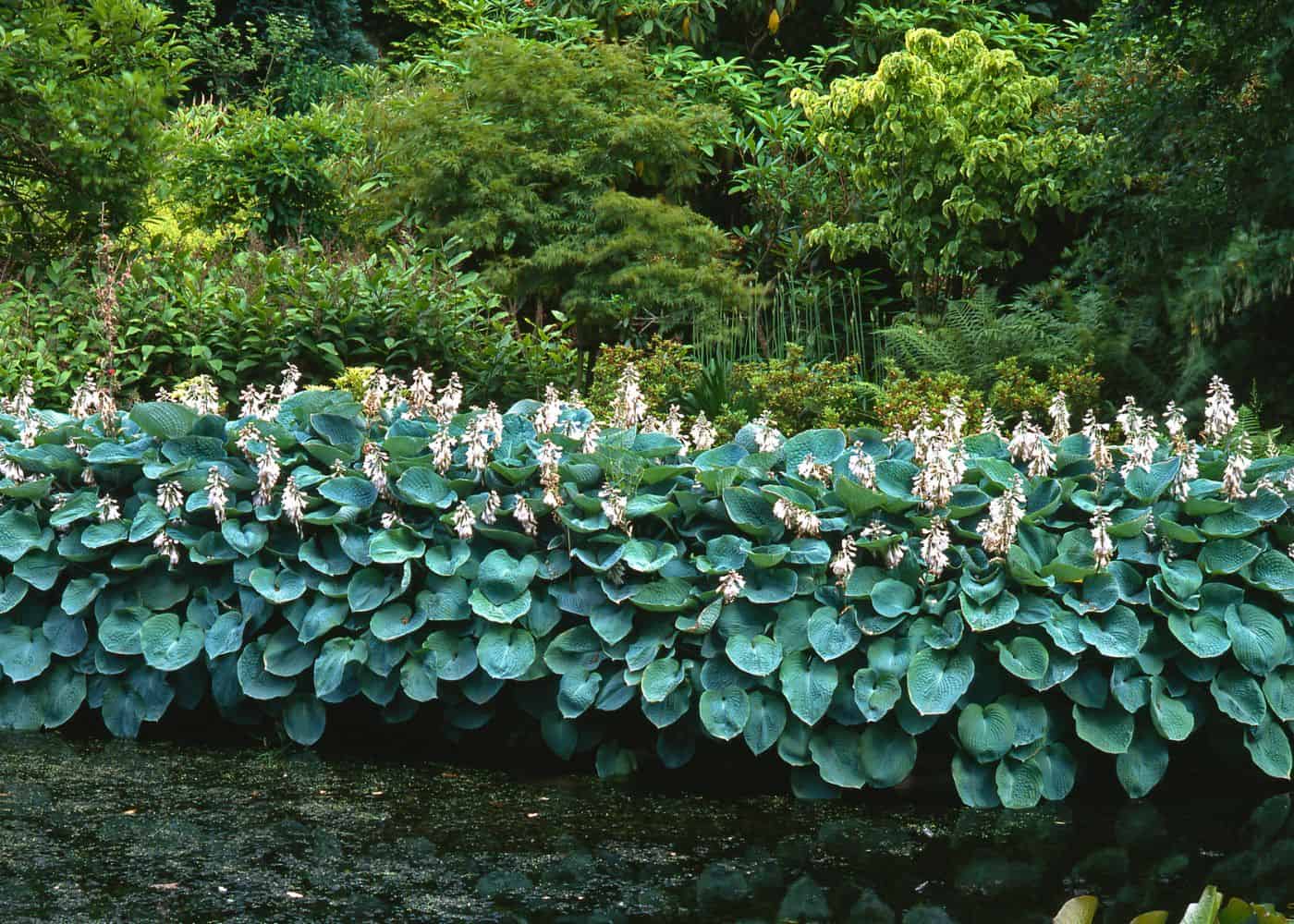
5. Grow them around water
Hosta plants are a great way to decorate ponds and other water features. If you have a garden pond, Hostas will beautify the space. Additionally, it will highlight your garden’s all-around appearance.
There’s another reason why Hostas are great to plant around water. They tend to grow well in soil that retains water.
You can plant blue hostas surrounding the pond to create a calming atmosphere. You can also add pink hardy water lilies inside the pond for a tranquil appearance.
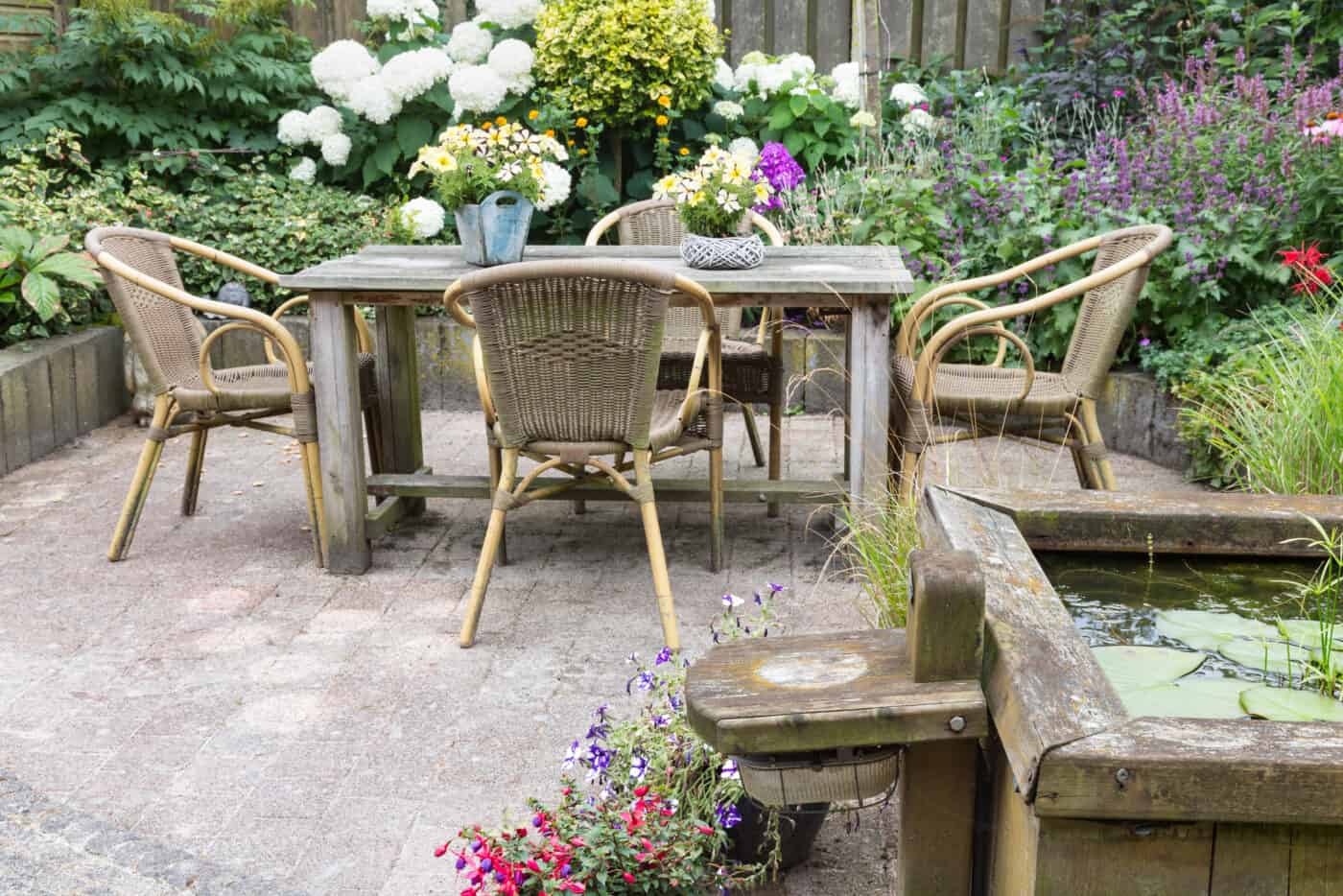
6. Establish a seating area
You can decorate a seating area using the plants if you enjoy the outdoors. You can furnish your area with a couple of garden chairs and a table. Then, it’s time to liven up the space. You can achieve this by growing small varieties of the Hostas.
These small plants can enhance your Hosta garden’s appeal points without paying too much attention to themselves. They will give the area a nice appearance while not making it the center of focus as they’re small.
Sun Mouse, Little Caesar, Tiny Tears, or ‘Blue Mouse Ears’ are great mini Hosta plants that you can use to beautify your seating area.
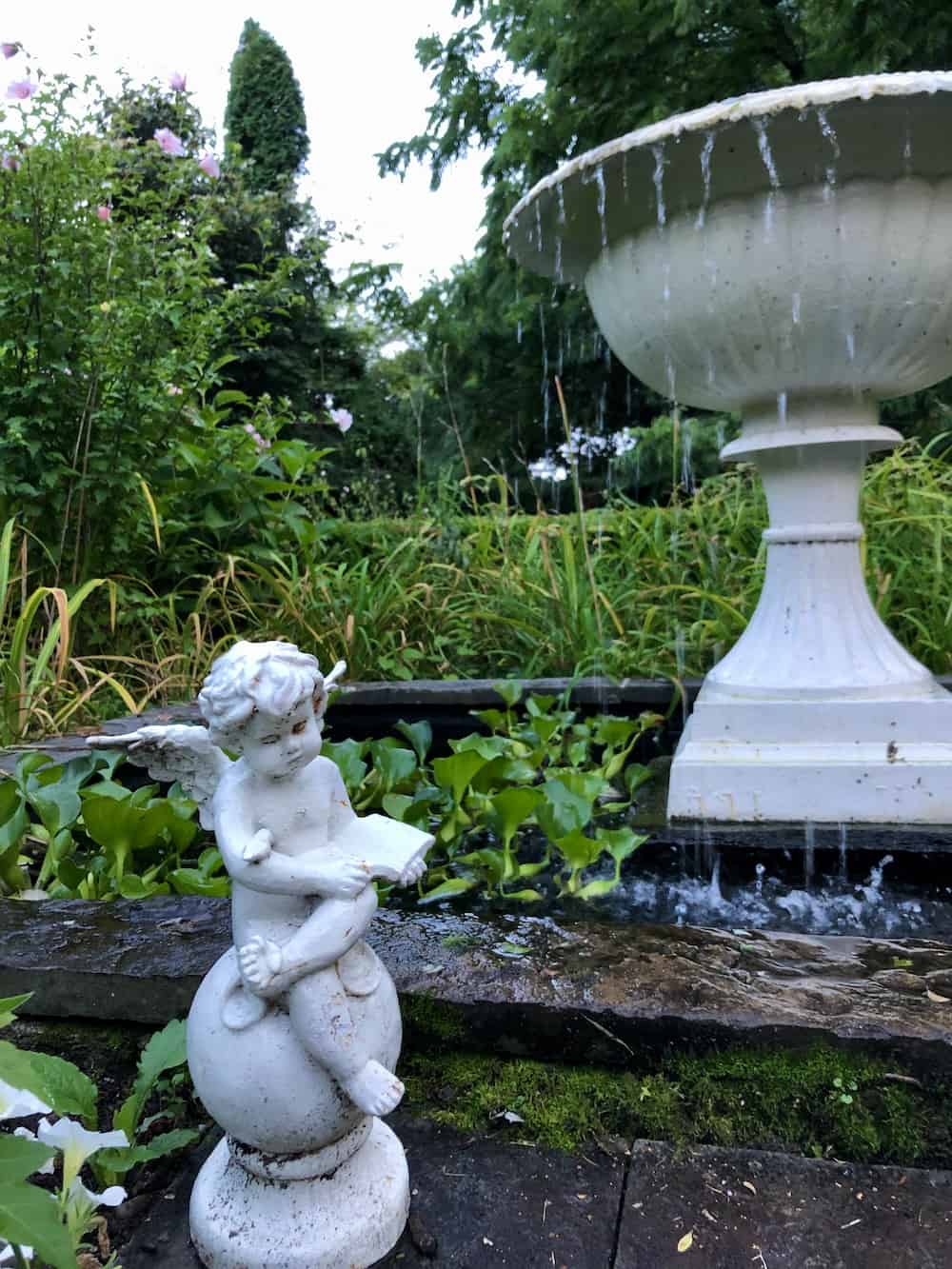
7. Place a centerpiece amidst your hostas
Placing your hostas around a focal point can help your garden stand out more. You may plant the area surrounding a birdbath, for instance, if you have one in your yard. In doing so, it will enhance the birdbath’s appearance and draw it out.
Shade perennials are another option because they go well with Hostas. Some of the plants you can add are dicentra or heuchera.
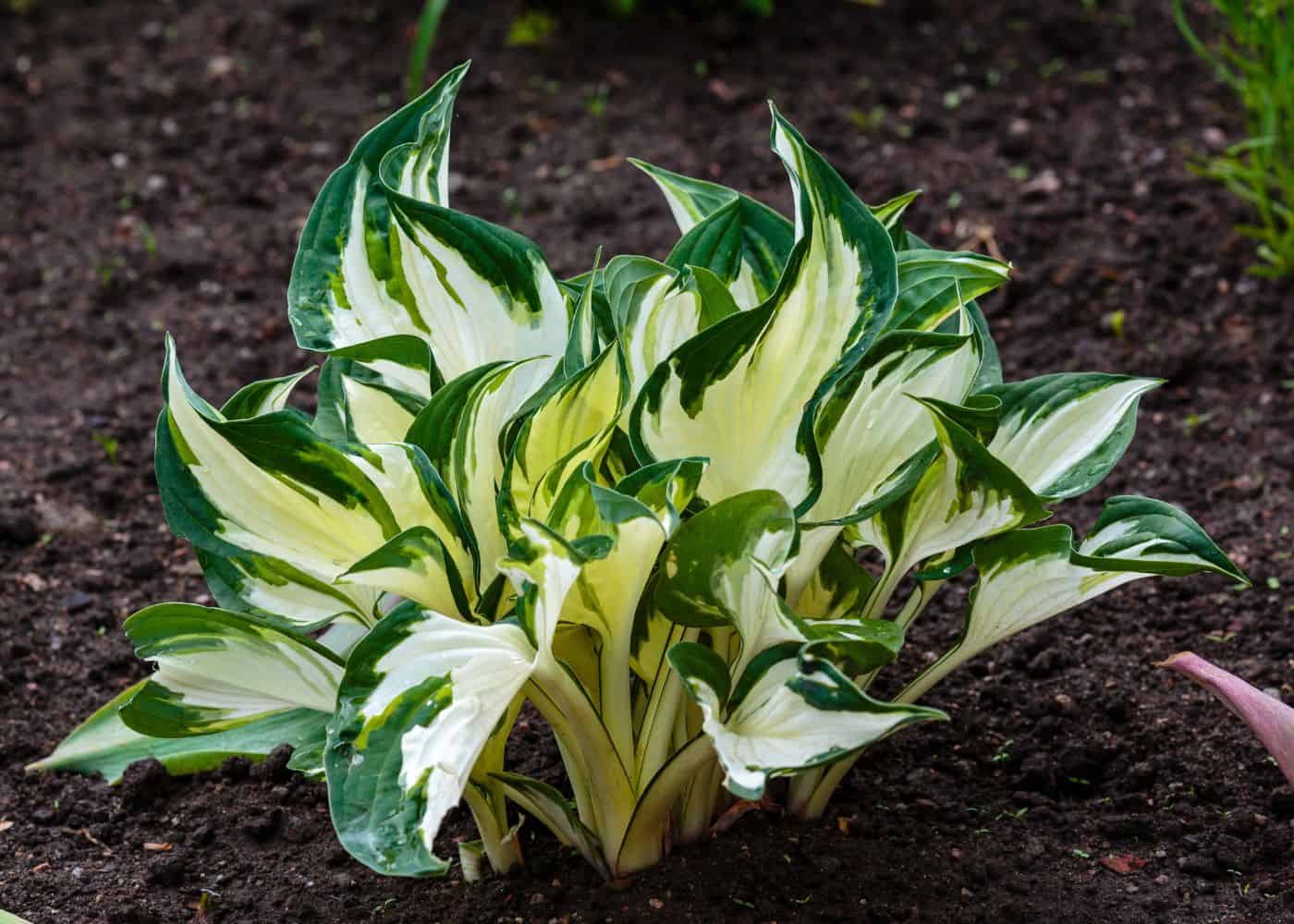
8. Plant a special hosta all on its own
While hostas are great to plant alongside other things, they also look lovely on their own. These plants can occupy a big space in your area thanks to their thick foliage and large leaves. Or, choose a pretty variegated cultivar that will stand out in the shade due to the yellow or white streaks on its leaves. There is even quite a popular near-white hosta called ‘White Feathers’ hosta.
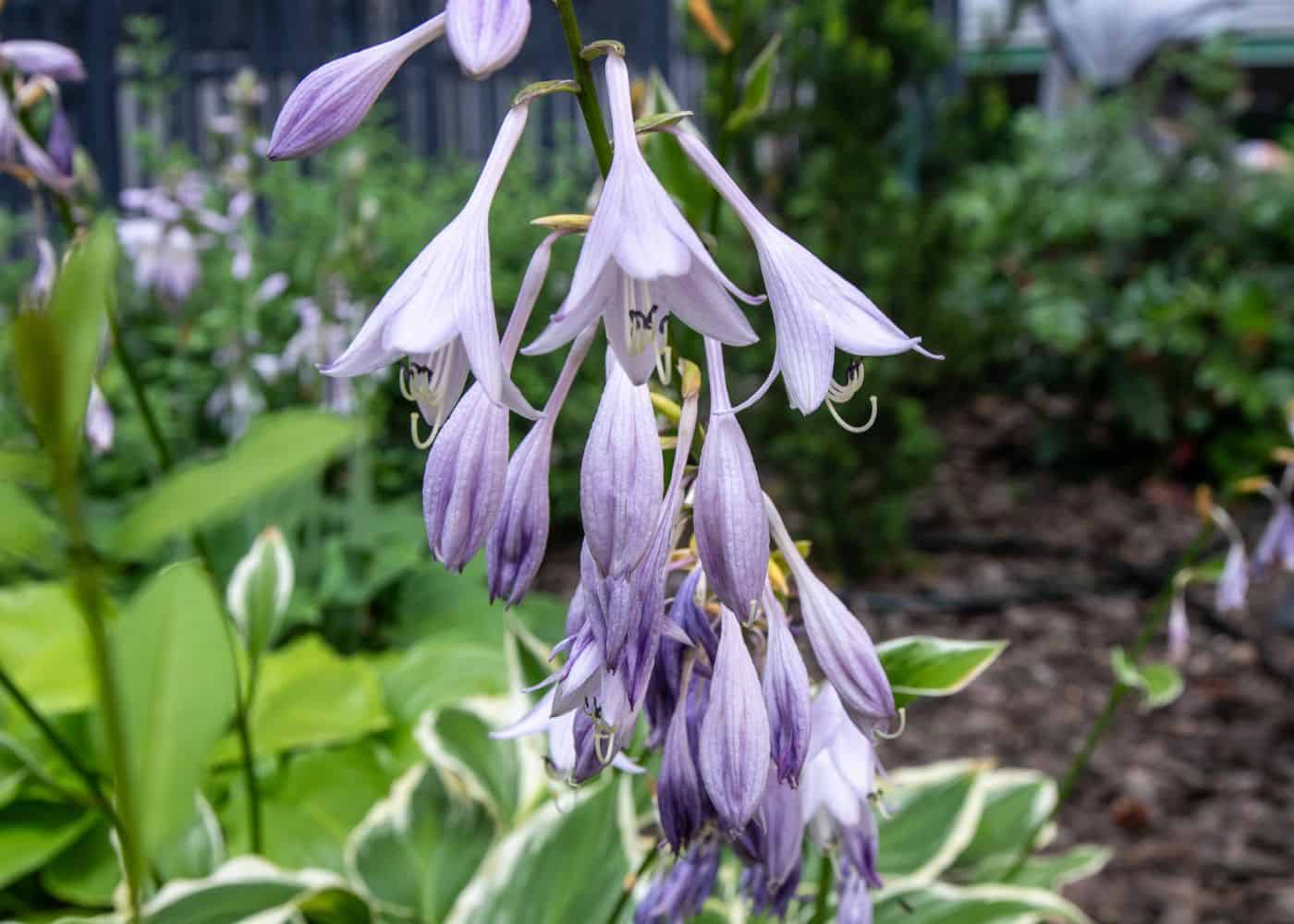
9. Add lushness to an empty shaded spot
Many plants prefer to be in direct sunlight. If your yard has a lot of shade and you’d like to grow something to make the space more lush, hostas can be good plants for that situation. These tough plants are perfect for a neglected corner or a side yard on the shady side of the house.
Start by placing large hosta cultivars in the back corners. You can plant giant hosta varieties if you have lots of space or choose variegated hostas if you’d like to bring a little visual texture to the area. For small spots and alongside walking paths, miniature hostas are a wonderful way to add a lush ground cover.


